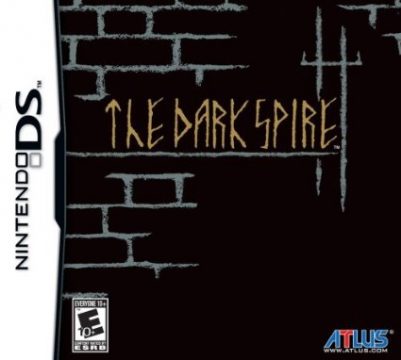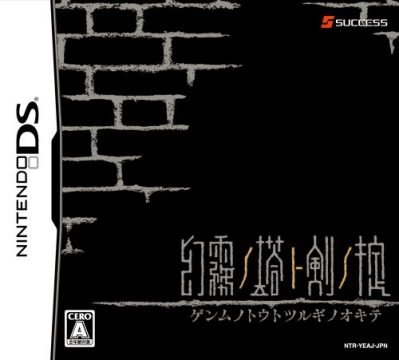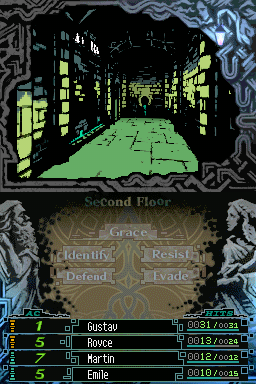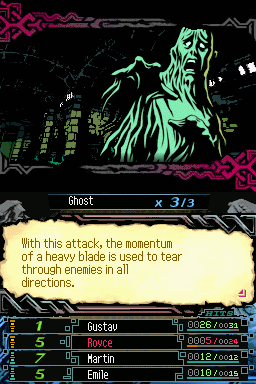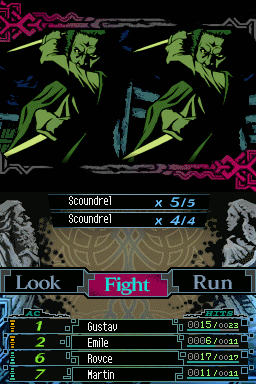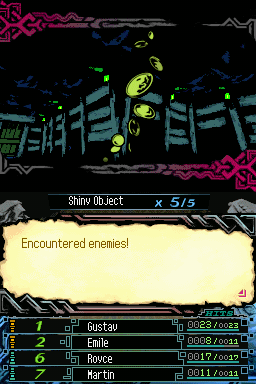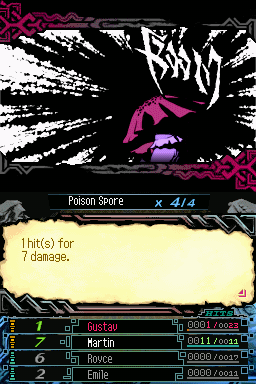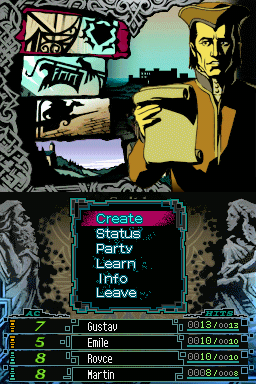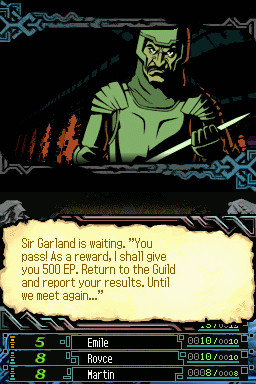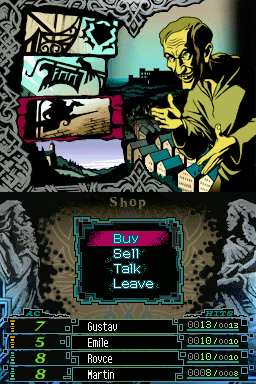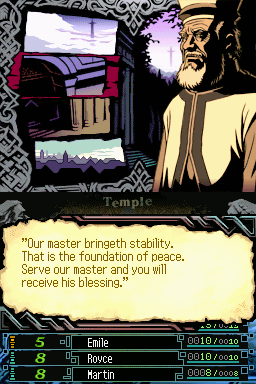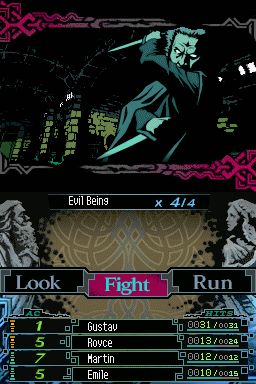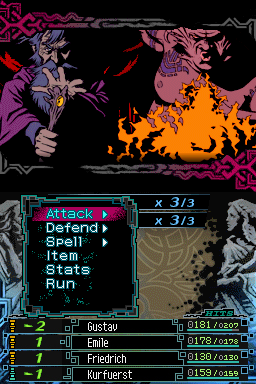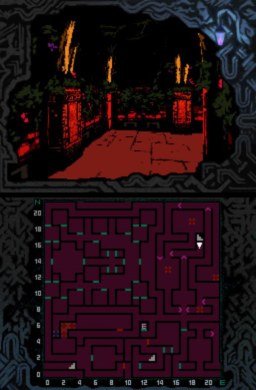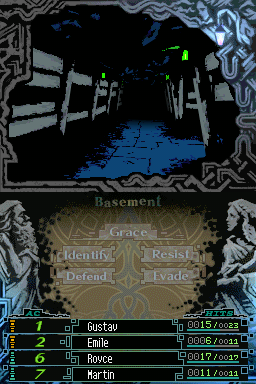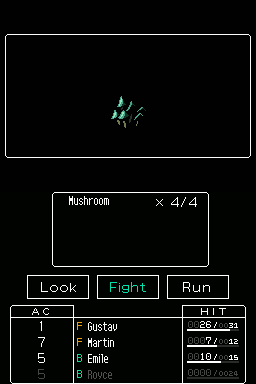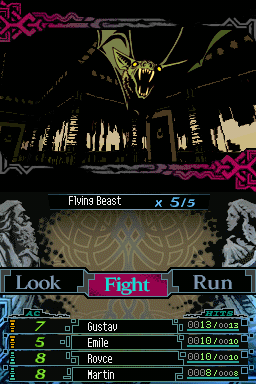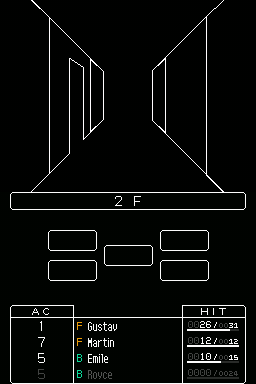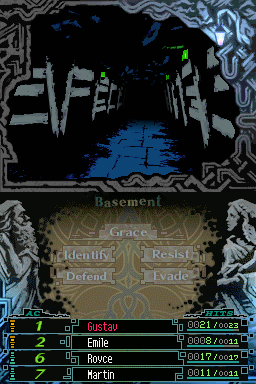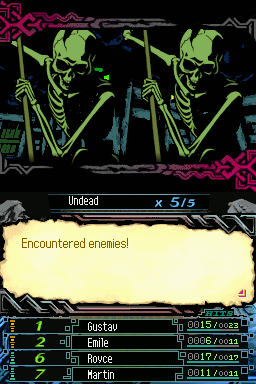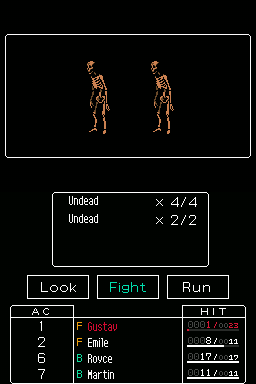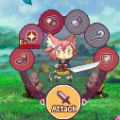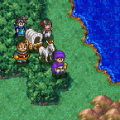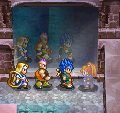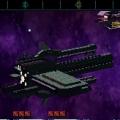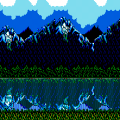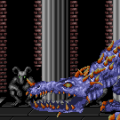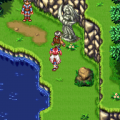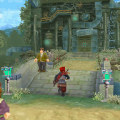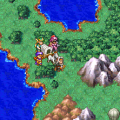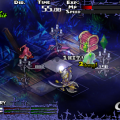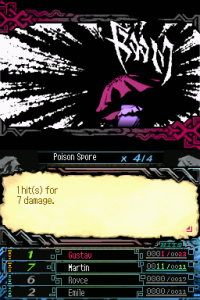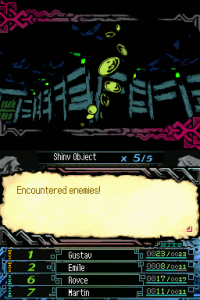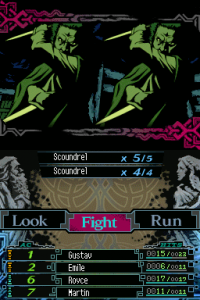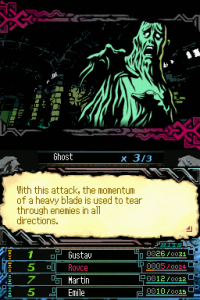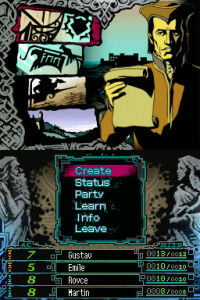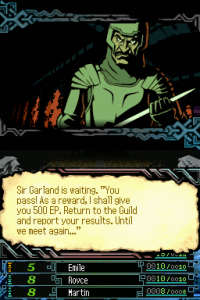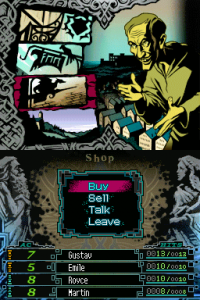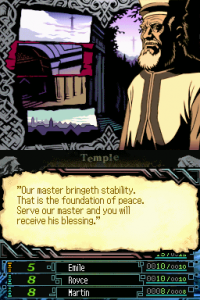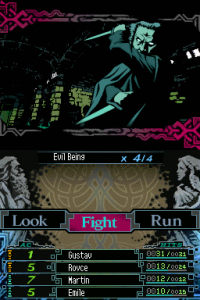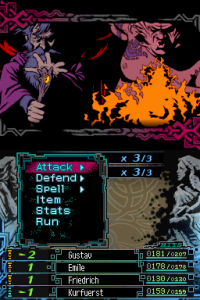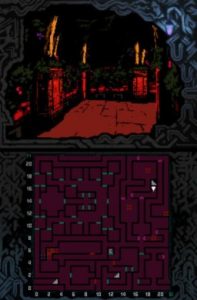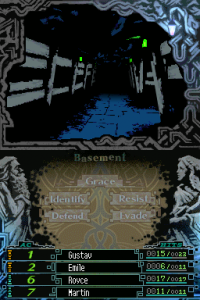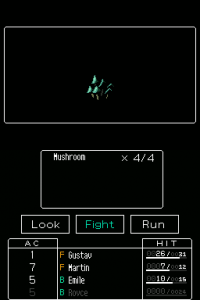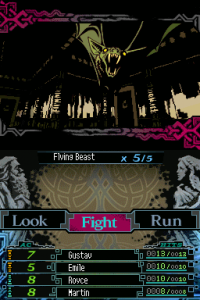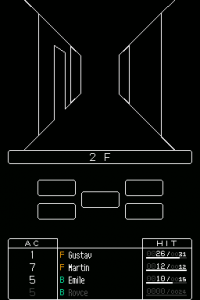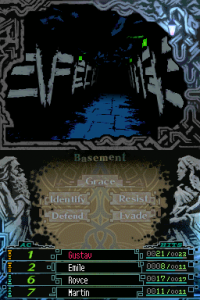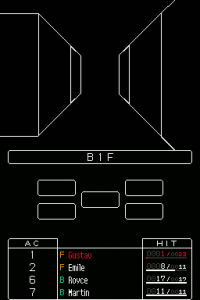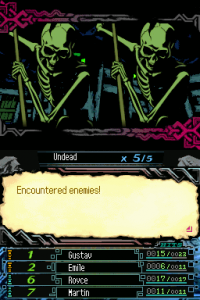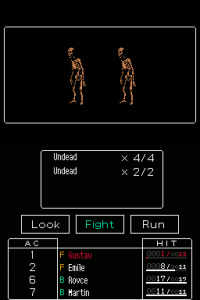by Adam Mrozinski
Developed by Success and released in the Nintendo DS, The Dark Spire takes heavy amounts of inspiration from the Wizardry series of computer RPG games and Advanced Dungeons & Dragons pen and paper table top games. Character creation, leveling system, and combat are all about randomly generated dice rolls. It can make things feel unpredictable and inconsistent but honestly it’s supposed to. Anybody that grew up playing D&D knows that a great deal of the excitement came from never really being able to assume what would happen next.
The Dark Spire falls into an interesting spot within the dungeon crawling genre. The pioneer titles in the 1980s like Wizardry did a very good job of turning the popular pen and paper hobby into an electronic medium that was highly enjoyable. However, those early games were just as complex and unforgiving as the table-top product they sought to mimic. Modern dungeon crawlers like the Etrian Odyssey series work to keep the spirit of the early games alive while adding to and altering the formula so as to make them less daunting for the palette of today’s gamer – more formulaic and less random, easier to navigate, heavier on story content. In other words, a cleaner more focused take on this type of game.
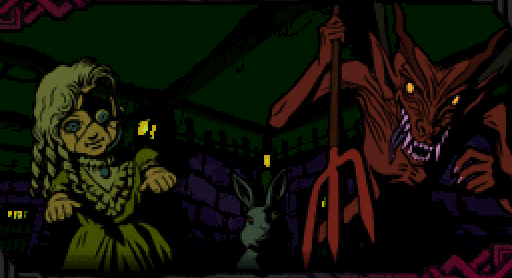
However, though it came out in 2008, The Dark Spire falls somewhere between the two. It’s not as strict as the games it was born from, nor is it as polished as the current generation of first person dungeon crawlers. The Dark Spire seems to have its own purpose. It wants to show you how exciting those classic RPGs were. It wants you to feel like its 1981, you’ve bested the Proving Grounds of the Mad Overlord, and now you’re fired up for another challenge. It wants to give you the experience of yesteryear without having to haul out the old Apple II. And it does a really good job at it.
Character creation in The Dark Spire is all up to you. There are no set party members and you’ll make each from scratch. You’ll be able to choose each adventurer’s race, alignment, and class. There are four races: Human, Dwarf, Elf, Halfling; three alignments: lawful, chaotic and neutral; and four classes: Warrior, Thief, Mage and Priest. In addition, by taking levels in multiple classes each character will be able to unlock advanced classes: Ninja, Samurai, Ranger, Paladin, Wizard, and Druid.
After some very brief training the game thrusts you right into the tower in which the action takes place. With almost no hand holding at all you’re forced to start making sense of how everything in the game works. In your low levels the tower is a meat grinder. It will happily have you for breakfast. It’s highly recommended to save often. More than likely after every battle since a random encounter with multiple foes can wipe out a fledgling party in the blink of an eye. Leveling does not happen automatically. With the needed amount of EP collected, travel back to the town guild hall and exchange the points for the level. At that point you can get your new skills and spells as well.
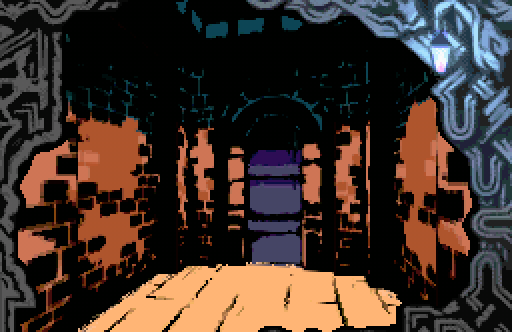
Starting gear is crucial too. Best to use a heroic formation with a warrior up front to minimize healing. Gear your warrior as well as you can and then give the thief a short bow, your mage and priest a quarterstaff and let them chill in the back row till everyone is around level 10. You also must pay really close attention to the map and where you are on the dungeon level. The in-game map does not show your position! Stay mindful of each step you’ve taken. Getting lost in the halls of the tower is really easy to do. Like Advanced D&D the combat in The Dark Spire is based on THAC0. (To Hit Armor Class Zero). Which means that unlike most RPG adventures lower numbers in your armor score are better than higher ones. For example, if your warrior’s AC value is -1, you’re doing alright. The random elements and your ability to create the party as you wish means that every time you start a new game the experience can be different than the last.
The setting, story, and characters in are wonderful. Every bit of artistic expression in this game is beautiful and inspired even when it’s dark and harsh. The story is lighthearted and fun. At all times it feels like the kind of tale that a great Dungeon Master and their closest friends would be telling together while seated around the dinner table among Monster Manuals, Player’s Guides, and a mountain of polyhedral dice. In fact, at the time of the Japanese release, Success’ website featured graph paper and character creation sheets to print out. The characters will have you seeing HP values scribbled on character sheets and wishing you could reach across the table to inspect their hand painted pewter miniature.
In addition, the soundtrack that Kenichi Arakawa crafted is brilliant. Every aspect of the game is enhanced by the corresponding musical piece that accompanies it. It’s a unique mixture of rock, routinely mixed with distorted chorales. Waist deep in Goblins? Shopping for a new Battle Axe? Praying at the local temple? Guaranteed that it sounds phenomenal. The North American DS release from Atlus is bundled with a CD that includes almost the entire soundtrack (a full 2 CD set was released separately but through limited channels in Japan).
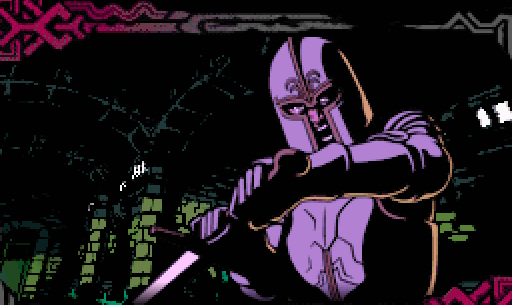
There are two artistic modes that allow you to swap the style from a modern look and musical score to a vintage computer themed aesthetic. In the modern view everything is wonderfully illustrated. The backgrounds of the tower’s corridors are highly detailed and all of the menus are bordered by ornate decoration that resemble weathered stonework and finely carved statues. All of the enemies you face and friends you meet are drawn with bold dark lines and rich colors that make them seem like they’re jumping off the screen. All of the artwork feels like it would be more at home on old fantasy film posters or in a Dungeon Master’s Guide as opposed to a cutesy anime-type JRPG produced in the past decade. The classic view strips away all of the modern glamour and reduces the game’s graphical display to the bare bones. All of the dungeon walls are displayed in black and white wire-frame, though they move smoothly, rather than the choppy block-by-block scrolling of the old days. The menus are plain text and void of any detail. The monsters and townsfolk are reduced to 8-bit pixel art. The soundtrack is the same music but rendered as if it were created on the 8-bit NES. The classic display may not be pretty by our standards now, but it provides a true glimpse at what was once considered cutting edge visuals and sound.
The game can be frustrating, of course. There’s an automap, for example, but it’s not persistant on the bottom of the screen, nor does it actually track your party’s location, just the layout. The game doesn’t list any of the stats for any equippable items, so you have no idea if a new weapon or armor piece is actually better or worse. Enemies routinely drop treasure chests, and many are trapped. The dungeons are filled with warp or poison tiles. The solutions to many puzzles are vague, and almost every tile of every floor needs to be searched in order to find hidden doors and other things. None of this should surprise old school Wizardry fans, but those who were brought into the first person dungeon crawler genre with Etrian Odyssey may find themselves in over their heads. There are only eight floors in the tower (plus the training grounds and the basement) but progress will slow, as you both return to town to heal and complete various subquests and solve many puzzles. The battle system is not particularly complex, but you do need to gauge whether to run away from combat fairly often. There are also three endings, requiring a bunch of extra steps and requirements to unlock the true finale.
When the game was released in Japan, the game was heavily critized for being very buggy. Much of this seems to have been cleaned up for the English localization. Still, despite of any technical problems, it’s clear that the developers had not only a great love for Wizardy and other early 80s RPGs, but fantasy as well. The items you need on for the fifth floor – the Trick Candles, Bell of the Dead, and the Necromancy Book – are similar to the items needed to enter the gates of Hell in the fourth Wizardry scenario. In the Japanese version, one of the possible (though incorrect) phrases to get past a certain area is “Dorobou Axe” (ドロボーアックス), which translates to “Thief Axe”. However, it also sounds very similar (again, in Japanese) to the phrase “TREBOR SUX” (トレボーサックス) which you can find scribbled around in the first Wizardry, and is a recurring phrase throughout the series. The name of the kingdom the game takes place in is Kanajana, named after a sword from Michael Moorcock’s The Eternal Champion book, there’s a reference to the “Catastrophe” (Cat-ass-trophy) from Piers Anthony’s Xanth series, a reference to the classic “sparrow” bit from Monty Python and the Holy Grail, and even a small nod towards Success’ own Touch Detective with the Mushroom Cookies. Unfortunately some of these references ended up getting lost in localization.
The Dark Spire can be both a trip down memory lane, or a glimpse into the way RPG games were in the beginning if you’re too young to recall those days. It’s a intentionally arcane and extremely difficult, but it’s certainly a very unique and interesting title in the DS library.
Links:
Genmu no Tou Wiki Japanese wiki with a strategy guide.
Success Corp. The official Japanese website.
Screenshot Comparisons

